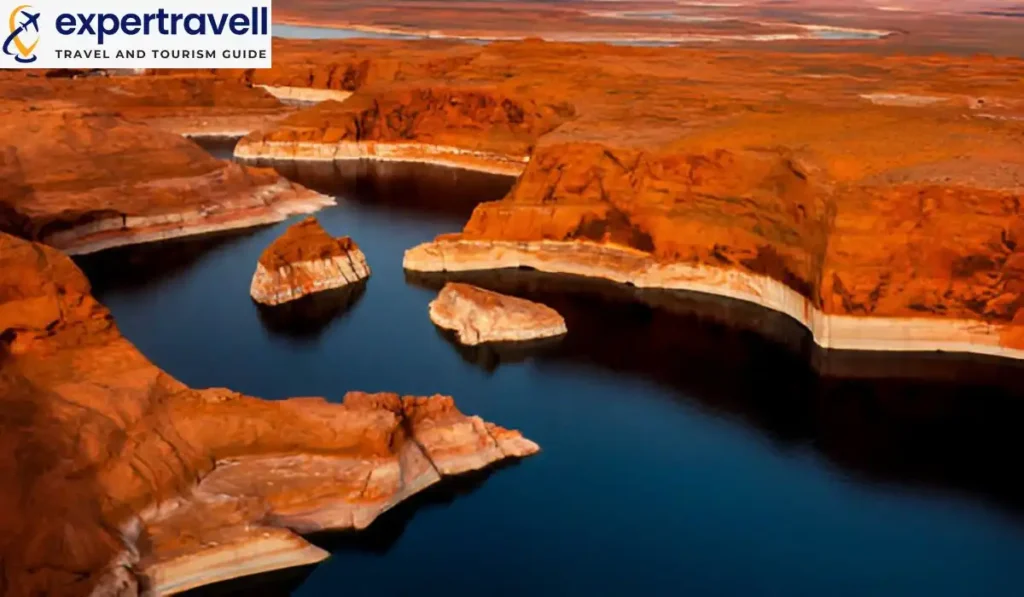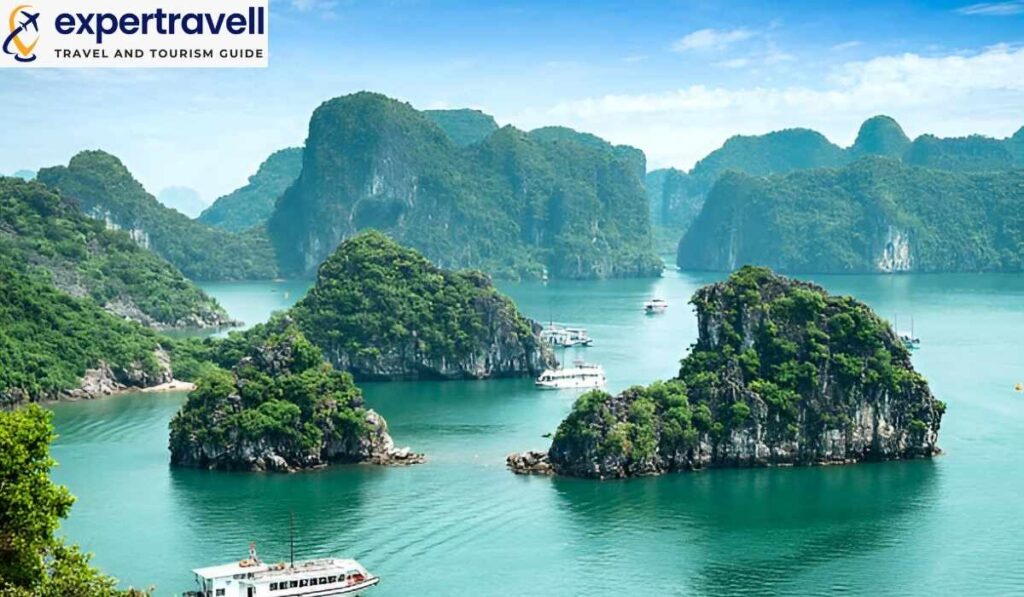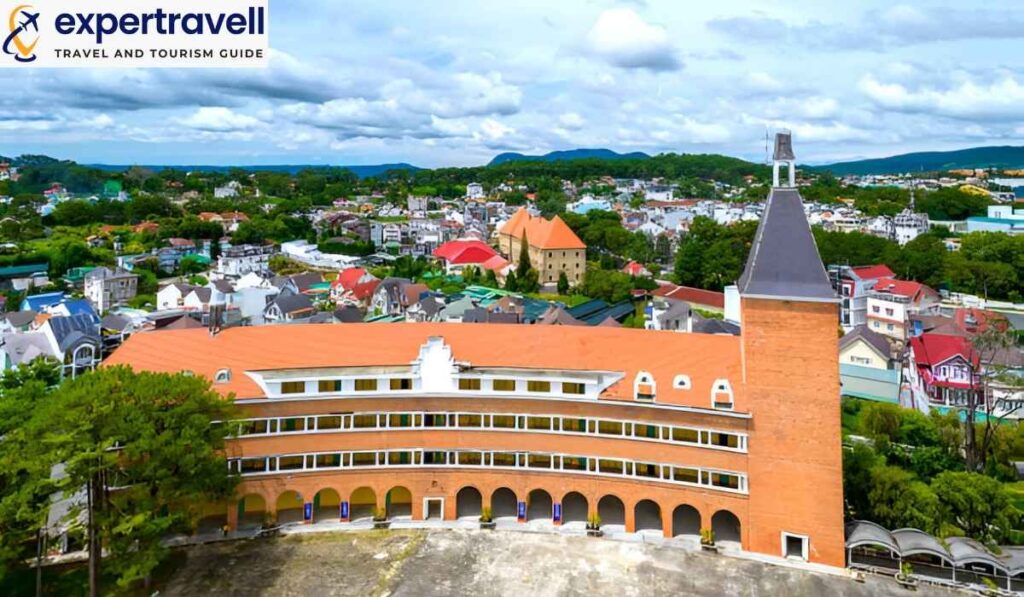Antelope Canyon is a stunning natural wonder in Arizona. This unique slot canyon features smooth, curved walls carved by water and wind over millions of years. Its beauty draws visitors from around the world.
To visit Antelope Canyon, you must book a tour with a Navajo guide. The canyon is on Navajo land and can only be accessed with a permit and guide. Tours are available for both Upper and Lower Antelope Canyon, each offering different experiences.
The best time to visit depends on what you want to see. Upper Antelope Canyon is famous for its light beams, which are most visible around midday from late March to early October. Lower Antelope Canyon is less crowded and offers a more adventurous experience with ladders and narrow passages. Both sections showcase the canyon’s amazing colors and shapes. If you’re seeking a similarly awe-inspiring natural wonder, you might also want to explore Peru’s Amazon Rainforest for its lush biodiversity and stunning landscapes.
Overview Of Antelope Canyon
Antelope Canyon is a stunning slot canyon in Arizona. It’s known for its smooth, winding walls and light beams that create magical scenes.
What Makes It Famous?
Antelope Canyon’s beauty comes from its unique formation. Water and wind carved the sandstone over millions of years. This created narrow passages with flowing curves and shapes. The canyon has two main parts: Upper and Lower Antelope Canyon. Upper Antelope Canyon is easier to visit. It has a flat, sandy bottom. Lower Antelope Canyon needs more hiking and climbing. Light beams shine into the canyon at certain times. These create amazing views that draw photographers from around the world. The best time to see these beams is usually midday in summer.
Importance For Travelers And Photographers
Antelope Canyon is a top spot for nature lovers and photographers. Its unique look makes it a must-see for many Arizona visitors. For photographers, the canyon offers rare chances to capture light and color. The way sunlight hits the walls creates magical effects. This draws both pros and beginners wanting to get that perfect shot. Travelers come to see a natural wonder unlike any other. The narrow passages and high walls feel like another world. It’s important to book tours in advance, as the canyon can get busy. The canyon is on Navajo land. Visitors must go with a guide to respect and protect the area. This also helps travelers learn about Navajo culture and history. If you love exploring stunning natural landscapes, you may also want to Visit Tulum to experience another breathtaking destination.
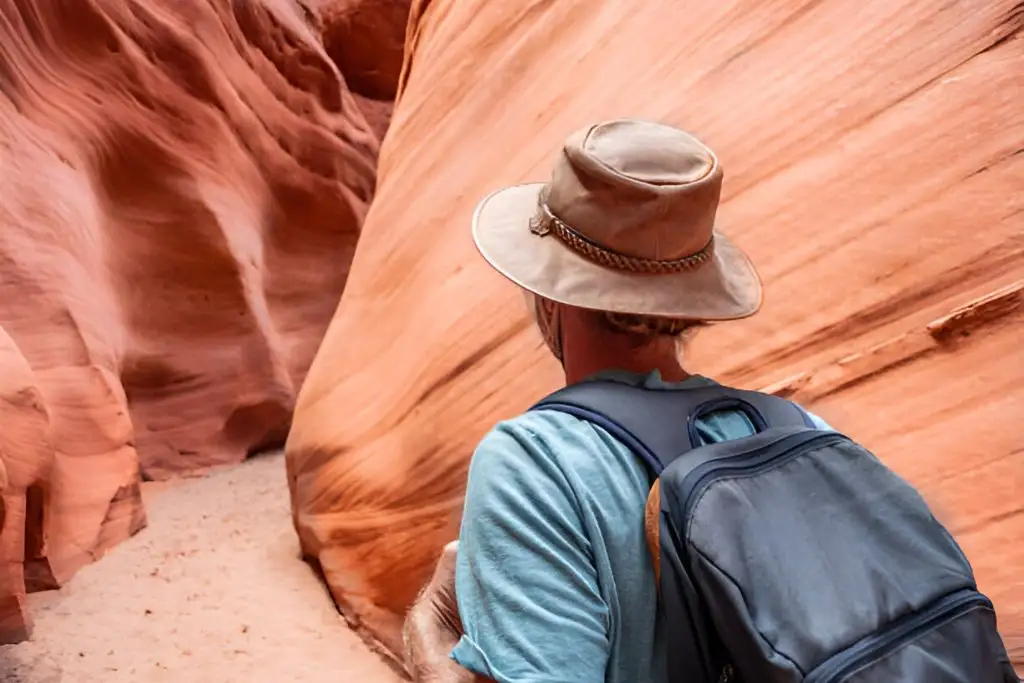
The Geological Wonders Of Antelope Canyon
Antelope Canyon showcases remarkable geological features formed over millions of years. Its stunning curves and colors result from natural processes involving water, wind, and erosion. If you’re ever looking to explore another awe-inspiring natural wonder, consider spending One Day in Cozumel, where the island’s landscapes are equally breathtaking.
How Antelope Canyon Was Formed: Slot Canyon Geology Explained
Antelope Canyon is a breathtaking slot canyon in Arizona. It formed through the slow erosion of Navajo Sandstone. This rock layer dates back to the Jurassic period, about 190 million years ago. Flash floods played a key role in carving the canyon. Over time, rushing water cut through weak points in the sandstone. This created narrow passages with smooth, curved walls. The canyon’s distinctive shape comes from its location. It sits where two rock layers meet. The upper layer is harder than the lower one. This difference led to the formation of the canyon’s unique “flowing” appearance.
The Role Of Erosion, Wind, And Water In Creating The Canyon’s Curves
Water is the main sculptor of Antelope Canyon. Flash floods carry sand and debris, which act like sandpaper on the canyon walls. This process slowly widens and deepens the passages. Wind also plays a part in shaping the canyon. It blows sand against the walls, smoothing them over time. This creates the canyon’s flowing, wave-like patterns.
The canyon’s vibrant colors come from minerals in the sandstone. Iron oxides produce reds and pinks. Other minerals create yellows and purples. Sunlight filtering into the canyon makes these colors appear to shift and change. Rainwater seeping through cracks adds to the erosion process. It slowly dissolves minerals, creating streaks and patterns on the walls.
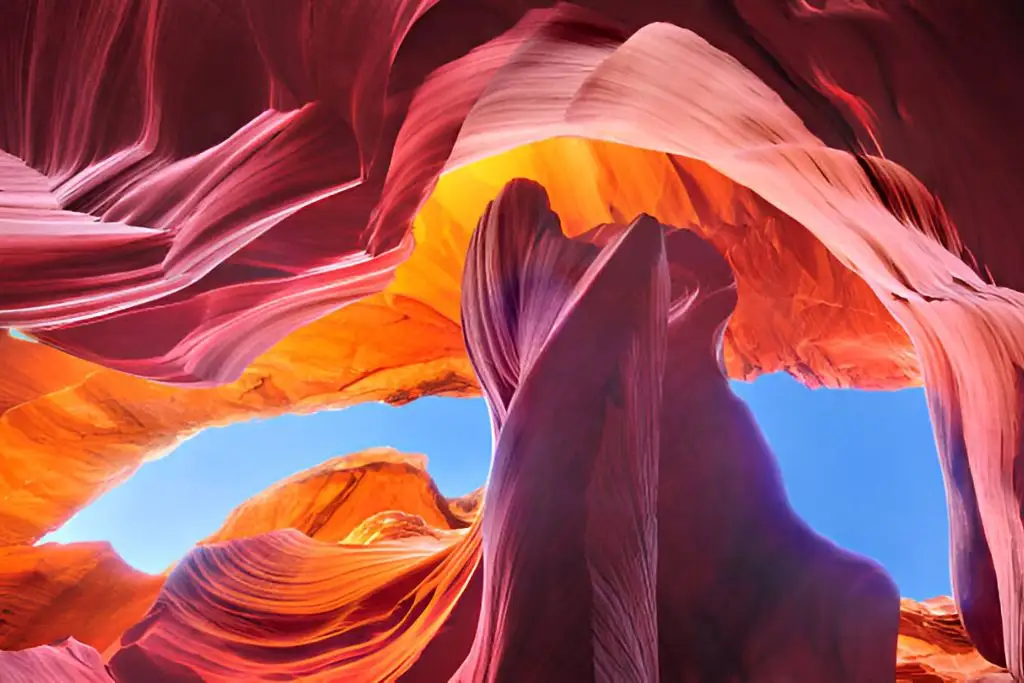
Cultural Significance: Antelope Canyon On Navajo Land
Antelope Canyon holds deep meaning for the Navajo people. Visitors should learn about its importance and show respect when exploring this sacred place.
Navajo Heritage And The Spiritual Significance Of Antelope Canyon
Antelope Canyon is known as “Tsé bighánílíní” in the Navajo language. This name means “the place where water runs through rocks.” The canyon has been on Navajo land for generations. To the Navajo, Antelope Canyon is more than just a beautiful place. It’s a symbol of Mother Nature’s gifts and power. The Navajo give thanks to nature here every four years. The unique rock formations have spiritual meaning. They remind the Navajo of their connection to the earth and their ancestors. The play of light in the canyon is seen as a divine presence.
Respecting Navajo Traditions When Visiting
Antelope Canyon is a Navajo Tribal Park. Visitors can only enter with a Navajo guide. This rule helps protect the canyon and share its history.
Tourists should follow all rules set by the Navajo Nation. Some key points:
- No littering
- No touching the canyon walls
- No removing rocks or plants
- No selfie sticks
Guides share Navajo stories and beliefs about the canyon. Listening with respect helps visitors understand its true value. Taking photos is allowed, but remember the spiritual nature of the place.
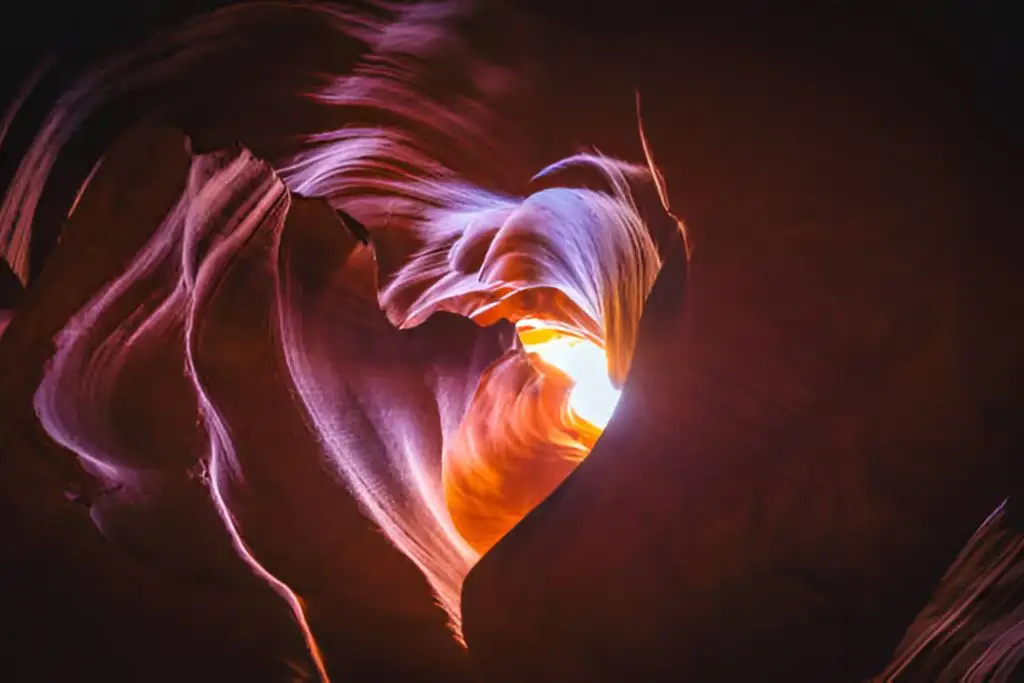
Getting To Antelope Canyon
Antelope Canyon is located near Page, Arizona. Most visitors start their journey from this small town. From Page, it’s a short 10-15 minute drive to reach the canyon. Take Highway 98 east for about 7 miles. Shuttle services are available from Page. These provide transportation to and from the canyon entrance. If driving yourself, follow the signs to the Antelope Canyon parking area. Parking is limited, so arrive early. Tour companies often offer pick-up services from hotels in Page. This can be a convenient option for those without a car.
For visitors coming from further away, the nearest major airports are:
- Phoenix, Arizona (about 4.5 hours drive)
- Las Vegas, Nevada (about 4.5 hours drive)
- Salt Lake City, Utah (about 6 hours drive)
authorisedRenting a car is recommended for flexibility. The roads to Antelope Canyon are paved and well-maintained. Remember, you can only enter Antelope Canyon with an authorized Navajo guide. Book your tour in advance, especially during peak season.
Upper vs. . Lower Antelope Canyon: Which Should You Visit?
Antelope Canyon offers two main sections for visitors to explore: Upper and Lower. Each has its own unique features and experiences. There’s also a less crowded option called Antelope X. The best choice depends on your preferences and photography goals.
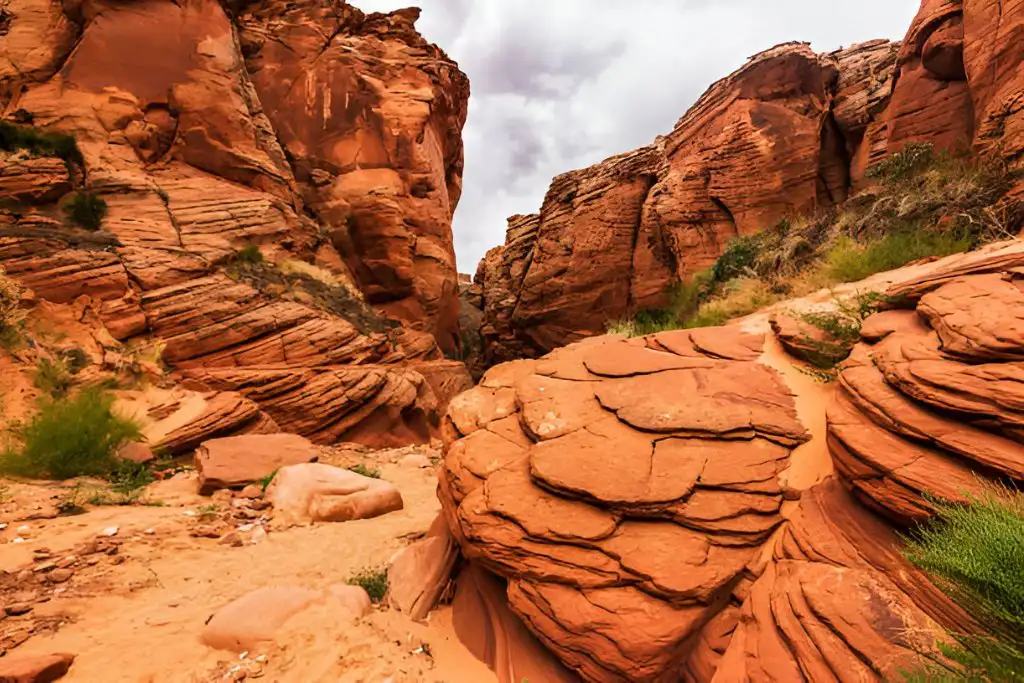
Upper Antelope Canyon: What To Expect, Pros & Cons
Upper Antelope Canyon is known for its stunning light beams. These beams shine through the narrow openings above, creating a magical atmosphere. The canyon floor is mostly flat, making it easier to walk through.
Pros:
- Easier access for all fitness levels
- Famous light beams (best seen between 10 am and 1 pm)
- Wider at the bottom for more space
Cons:
- More crowded tours
- Higher ticket prices (around $150-$180)
- Shorter visit time (about 1 hour)
Upper Antelope Canyon is ideal for those seeking the iconic light beam photos. It’s also better for visitors with mobility issues due to its flat terrain.
Lower Antelope Canyon: What To Expect, Pros & Cons
Lower Antelope Canyon offers a more adventurous experience. Visitors must climb down ladders and navigate narrow passageways. The canyon is known for its unique rock formations and swirling patterns.
Pros:
- Less crowded and more relaxed tours
- Lower ticket prices (around $100)
- Longer visit time
Cons:
- Requires climbing ladders and stairs
- No light beams
- Can be challenging for those with mobility issues
Lower Antelope Canyon is great for active visitors who enjoy a bit of a challenge. It offers more time to explore and take photos without feeling rushed.
Antelope X: A Less Crowded Alternative
Antelope X is a newer option for visitors looking to avoid crowds. It’s similar to Lower Antelope Canyon in terms of terrain and features.
Pros:
- Fewer tourists
- More time to explore and take photos
- Similar rock formations to Lower Antelope Canyon
Cons:
- Less famous than Upper and Lower canyons
- May not be offered by all tour companies
- Fewer online reviews and information available
Antelope X is perfect for those who want a more peaceful canyon experience. It’s a good choice for photographers who need extra time to set up shots.
Which Canyon Is Better For Photography?
Upper Antelope Canyon is ideal for capturing famous light beams, visible between 11 am and 1:30 pm, though it can be crowded. Lower Antelope Canyon offers more space and time for unique shots, with consistent lighting throughout the day. Antelope X provides the most freedom, with fewer crowds and more opportunities to experiment with angles.For light beams, choose Upper Antelope Canyon. For variety and fewer people, opt for Lower Antelope or Antelope X.
The Tour Experience
Antelope Canyon tours offer unique adventures through stunning slot canyons. Visitors can choose between guided trips to Upper, Lower, or Antelope X sections. Each tour has its own features and costs.
Guided Tours: What To Expect During The Tour
Antelope Canyon tours typically last 1 to 1.5 hours. Guides lead small groups through narrow passageways, pointing out interesting rock formations and ideal photo spots.Upper Canyon tours focus on light beams shining into the canyon. These are best seen midday during summer months.Lower Canyon tours involve climbing ladders and navigating tighter spaces. This can be more physically demanding but less crowded.Antelope X tours offer a quieter experience away from the main tourist areas. Guides share Navajo history and culture during the walk.
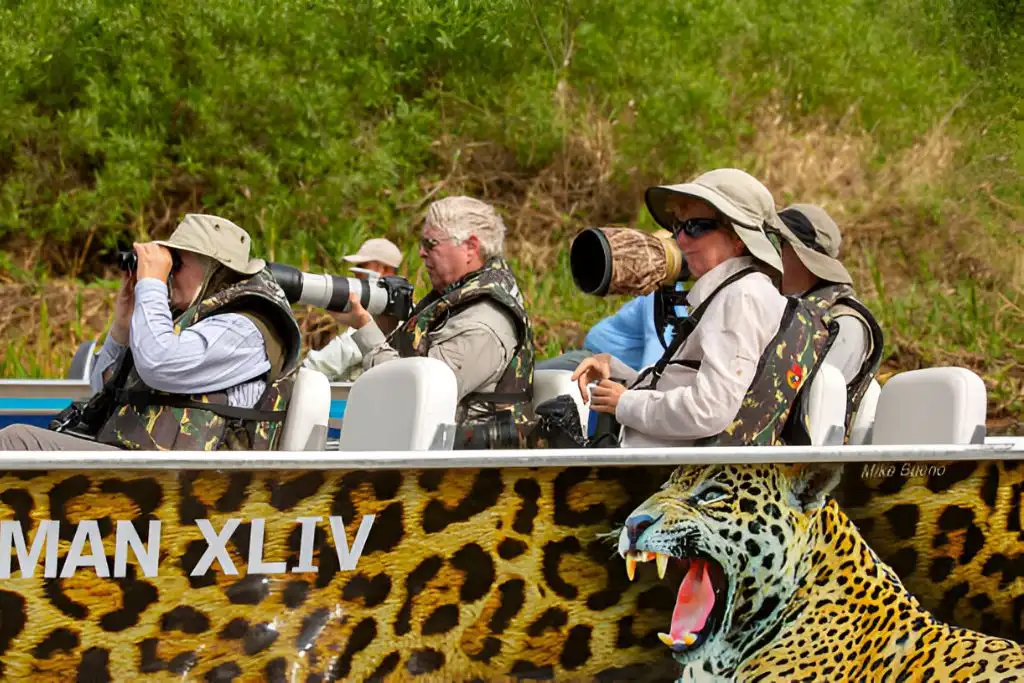
Information About Shuttle Services And Tour Operators
Tour operators provide transportation from Page, Arizona to the canyon entrance. Visitors meet at a central location before boarding 4×4 vehicles for a short drive through sandy terrain.
Several Navajo-owned companies run tours. Popular operators include:
- Antelope Canyon Tours
- Antelope Slot Canyon Tours
- Ken’s Tours
It’s important to book with authorized companies to ensure safety and respect for Navajo land.
Key Differences Between Upper, Lower, And Antelope X Tours
Upper Antelope Canyon:
- Wider and easier to walk through
- Famous for light beams
- More crowded
Lower Antelope Canyon:
- Narrower with stairs and ladders
- Requires more physical effort
- Less crowded than Upper
Antelope X:
- Less touristy
- Combines elements of Upper and Lower canyons
- Offers two canyon sections during the tour
Costs And Fees For Each Tour: Is Antelope Canyon Worth It?
Tour prices vary based on canyon section and time of day:
- Upper Antelope Canyon: $50-$90 per adult
- Lower Antelope Canyon: $40-$80 per adult
- Antelope X: Prices similar to Upper Canyon
Additional fees include:
- Navajo Park entrance fee: $8 per person
- Guide tips (optional but recommended)
Many visitors find the unique beauty of Antelope Canyon worth the cost. The sandstone formations and play of light create unforgettable experiences.
Tips On Booking Your Tour: How Far In Advance To Book, Best Operators
Book Antelope Canyon tours well in advance, especially for peak summer months. Reservations often fill up quickly, sometimes months ahead.
For the best light, book midday tours between 11 AM and 1:30 PM. This is particularly important for Upper Antelope Canyon.
Top-rated operators include:
- Antelope Canyon Navajo Tours
- Ken’s Lower Antelope Canyon Tours
- Antelope Canyon X by Taadidiin Tours
Check recent reviews and compare prices before booking. Some companies offer early bird or last-chance tour discounts.
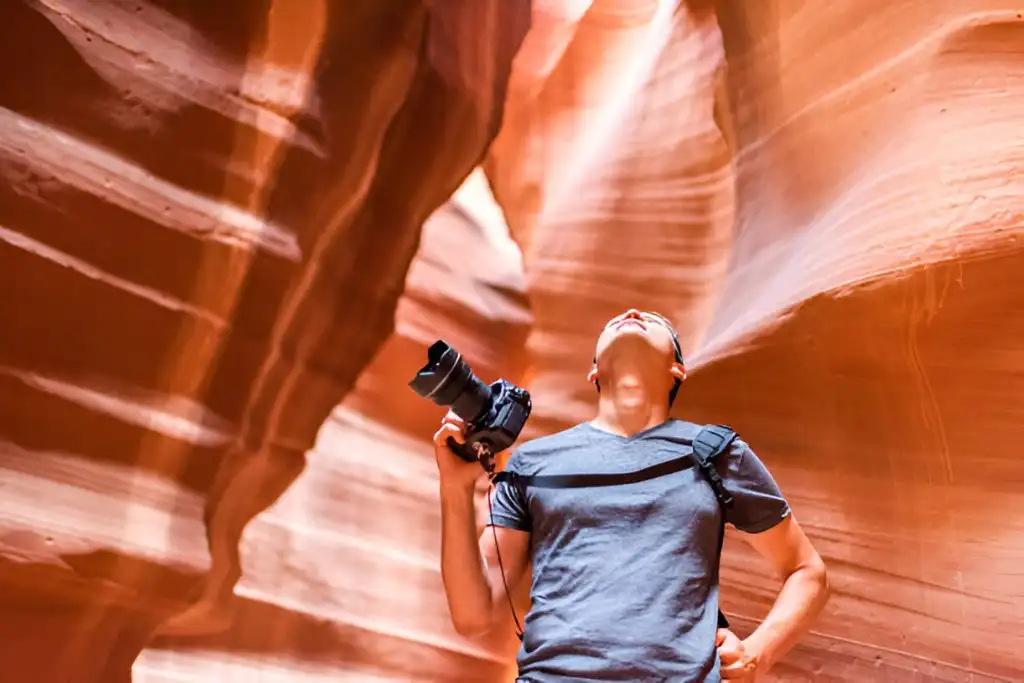
Photography Tips For Capturing Antelope Canyon
Antelope Canyon offers stunning photo opportunities. The best time to visit is between 10 AM hutter speed (2-6 seconds) and set the aperture between F11 and F18 to capture details. Shoot in RAW for more editing flexibility.Tripods aren’t allowed in Lower Antelope Canyon, so rely on handheld techniques. Essential gear includes a wide-angle lens, microfiber cloth, and extra batteries.Special photo tours offer more time for setup. Respect Navajo guide rules and avoid touching the canyon walls. Consider visiting nearby canyons for more photography opportunities.
What To Wear And Pack For Your Visit
When visiting Antelope Canyon, wear breathable clothes like lightweight pants and a T-shirt. Choose sturdy, closed-toe shoes for the uneven, sandy terrain. Protect yourself from the sun with a wide-brimmed hat, sunglasses, and sunscreen. Carry a small backpack for water and snacks to stay hydrated, especially in hot weather.
Items to avoid bringing:
- Large bags or backpacks
- Tripods or selfie sticks
- Food (except small snacks)
- Pets
These items can damage the canyon or interfere with other visitors’ experiences.
For photography enthusiasts, bring a camera that performs well in low light. The best time for photos is midday when sunbeams enter the canyon. Remember to dress in layers. The canyon can be cooler than the outside temperature. A light jacket might be useful, especially in spring or fall.
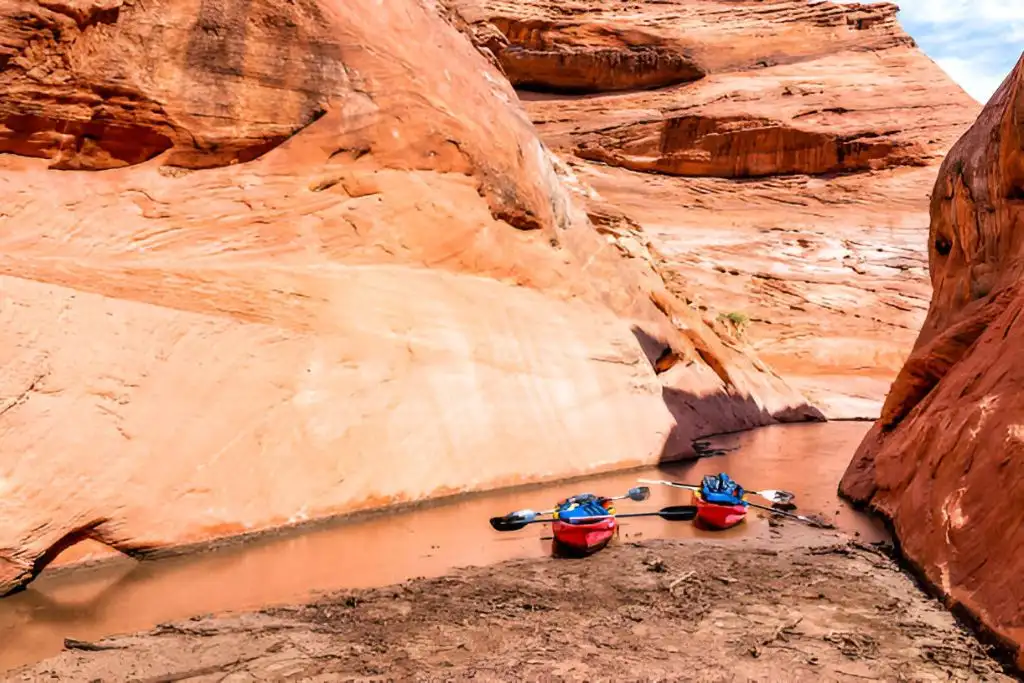
Kayaking To Antelope Canyon And Exploring Secret & Deer Canyons
Kayaking to Antelope Canyon offers a unique experience, with a 3.5-mile paddle each way from Antelope Point Marina, taking about 2 hours. For fewer crowds, consider Secret Canyon or Deer Canyon, both featuring stunning rock formations. Access to these canyons requires guided tours with authorized operators, often including transportation and expert guides.
Kayak rental options in Page, Arizona include:
- Single kayaks: $55 per day
- Double kayaks: $70 per day
Rental prices typically include delivery and pick-up of the kayaks at set times.
When planning a kayaking trip to these canyons, visitors should:
- Bring plenty of water and snacks
- Wear sunscreen and a hat
- Check weather conditions before setting out
- Follow all safety guidelines provided by rental companies or tour operators
Exploring these lesser-known canyons by kayak offers a peaceful and intimate experience with nature. Visitors can enjoy the unique rock formations and tranquil waters away from the busier areas of Lake Powell.
Other Attractions And Activities Near Antelope Canyon
Antelope Canyon is surrounded by stunning natural wonders and exciting outdoor activities. Visitors can explore nearby geological marvels and enjoy water-based recreation on Lake Powell.
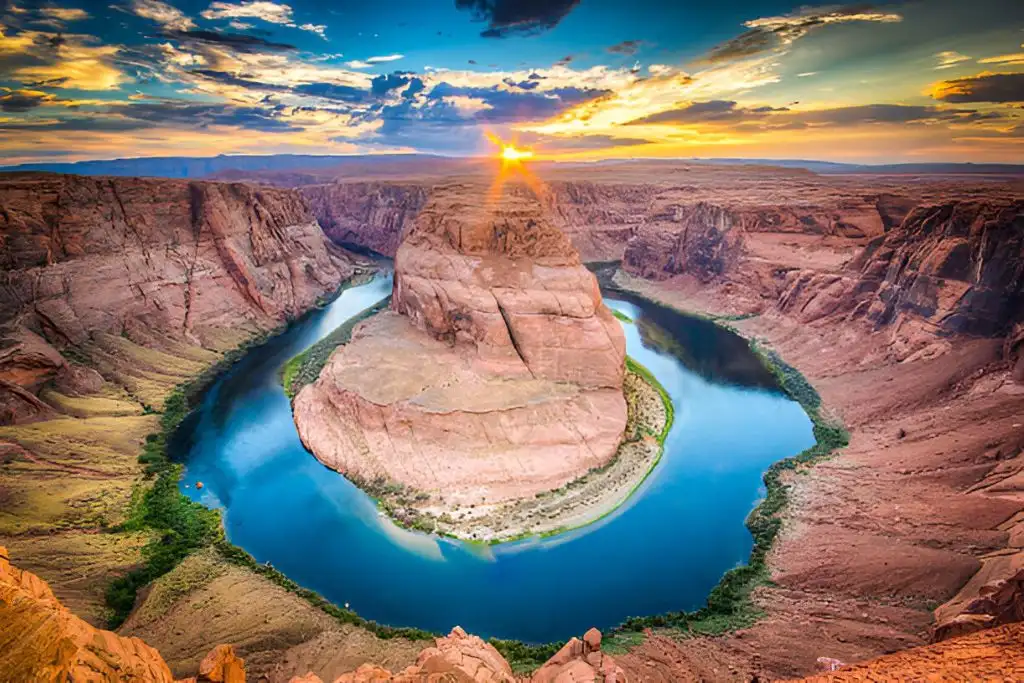
Horseshoe Bend: A Must-See Nearby
Horseshoe Bend is a breathtaking sight just a short drive from Antelope Canyon. This iconic meander of the Colorado River creates a horseshoe-shaped curve in the canyon. The overlook is about 4 miles southwest of Page, Arizona. Visitors can reach it with a short 1.5-mile round-trip hike from the parking lot. The best times to visit are early morning or late afternoon for softer light and cooler temperatures. Photographers flock to capture the stunning views, especially during sunset. Safety is important at the unfenced overlook. Sturdy shoes and plenty of water are recommended for the walk.
Lake Powell: Boating, Hiking, And Other Activities
Lake Powell offers a variety of water-based activities near Antelope Canyon. This massive reservoir on the Colorado River spans 186 miles and boasts nearly 2,000 miles of shoreline.
Popular activities include:
- Boating and kayaking
- Fishing for bass, walleye, and catfish
- Swimming in secluded coves
- Hiking along the shoreline
Antelope Point Marina provides boat rentals and guided tours. Visitors can explore hidden canyons and witness stunning rock formations from the water. The lake’s unique landscape of red rock canyons and clear blue water creates a striking contrast. Camping is available at several developed campgrounds and primitive beach sites.
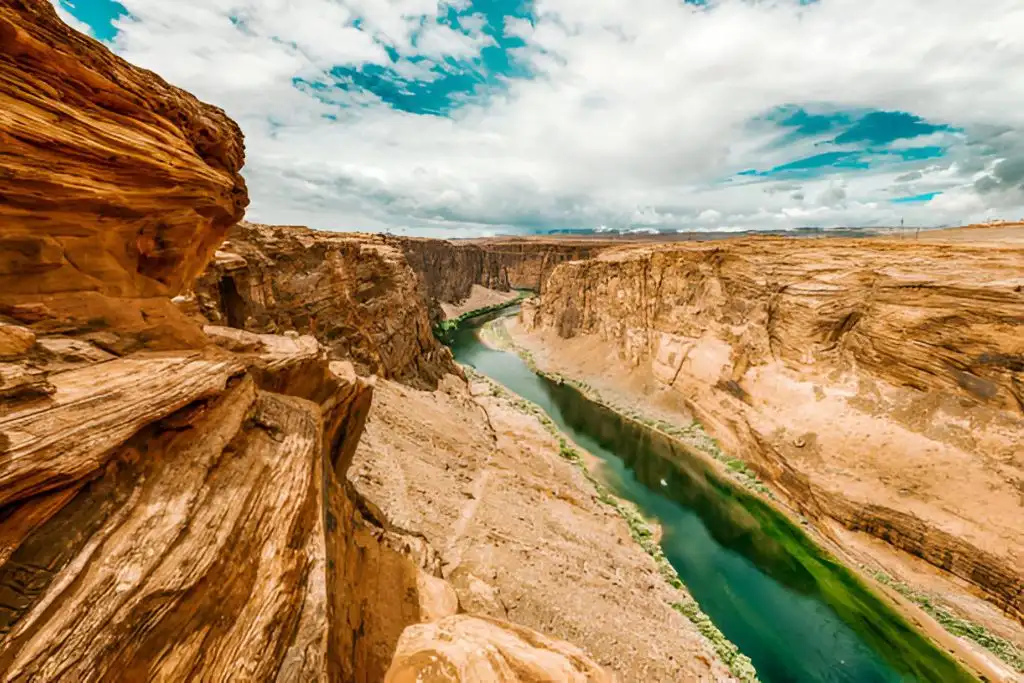
Exploring The Grand Canyon: Proximity And Tips For Combining Both
The Grand Canyon is about 2.5 hours from Antelope Canyon, making it possible to visit both on the same trip. The North Rim is closer but is only open from mid-May to mid-October.
Tips for combining visits:
- Plan at least one full day for each location
- Book accommodations in advance, especially during peak season
- Consider a guided tour to maximize time and experiences
The Grand Canyon’s South Rim is open year-round and offers more services and viewpoints. Popular activities include hiking, mule rides, and scenic drives along Desert View Drive. For a unique perspective, visitors can take a helicopter tour over both Antelope Canyon and the Grand Canyon. This offers a bird’s-eye view of these incredible geological formations.
When Is The Best Time To Visit Antelope Canyon?
The best time to visit Antelope Canyon is from March to October, when sunlight creates stunning effects. Spring offers mild weather and fewer crowds, while summer provides the best lighting for light beams (11:00 am to 1:30 pm) but is the busiest season. Fall has smaller crowds with good lighting, and winter is peaceful but cooler with more muted colors. To avoid crowds, book tours for early morning or late afternoon, visit on weekdays, or go during spring or fall. For the best photos, midday tours are ideal, especially in Lower Antelope Canyon. Guided tours are required, so booking in advance is recommended.
Safety Tips For Visiting Antelope Canyon
Antelope Canyon’s beauty comes with some risks. Visitors should be aware of potential dangers and take steps to stay safe during their tour.
Navigating The Narrow Canyon Safely
Move slowly through the narrow passages and watch your step on uneven surfaces. Keep hands free for balance, and follow your guide’s instructions to navigate safely. Wear closed-toe shoes with good traction and avoid touching the canyon walls.
Weather Considerations: Flash Flood Risks
Flash floods are a serious threat in slot canyons. Always check the weather before your visit, and follow your guide’s evacuation orders if necessary. Be alert for signs of incoming water even on clear days.
How To Prepare Physically For The Tour
Lower Antelope Canyon requires more physical activity, including climbing ladders and steep stairs. Wear comfortable clothing and bring water. If you have health concerns, consult your tour operator, and take breaks as needed.
Sustainable Tourism And Conservation Efforts
Visiting Antelope Canyon requires care and respect for the environment. Tourists can minimize Protect Antelope Canyon by staying on marked paths, avoiding touching walls, and leaving no trace. Navajo guides educate visitors on the canyon’s cultural and natural significance, promoting responsible tourism. The Navajo Nation controls visitor numbers through timed entries and group size limits to reduce environmental impact. Preservation efforts include cleanups, erosion monitoring, and access restrictions during flash flood seasons.
Some tour operators offer sustainable alternatives, like Cardiac Canyon tours, to spread visitor impact. By following guidelines and choosing eco-friendly tours, visitors help preserve the canyon for future generations.

Costs Breakdown: Is Visiting Antelope Canyon Worth It?
Visiting Antelope Canyon comes with various expenses. Understanding these costs helps in planning and deciding if the experience matches the price.
Entry Fees, Tour Costs, and Additional Expenses
Upper Antelope Canyon tours cost about $100 per person, while Lower Antelope Canyon tours are around $60. Prices vary by time of day and season, with discounts for early or late tours. Additional expenses include transportation, lodging, food, camera fees, and guide tips.
Balancing Costs with the Overall Experience
Antelope Canyon’s stunning beauty makes the cost worth it for many. The light beams and rock formations create unforgettable views, and Navajo-led tours add cultural insights. The once-in-a-lifetime experience justifies the expense for most visitors.
Making The Most Of Your Antelope Canyon Experience
For the best photos at Antelope Canyon, visit between 10:00 AM and 1:30 PM for the strongest light beams. Book tours in advance, especially for summer, and choose a reputable company. Wear comfortable shoes and bring water. Upper Antelope Canyon is easily accessible with famous light beams but crowded. Lower Antelope Canyon is less busy, requires some climbing, and offers more adventure. Antelope Canyon X is a newer, less crowded option with a mix of both experiences. Choose based on accessibility, crowds, and your photography goals.
Frequently Asked Questions
Planning a trip to Antelope Canyon involves several key considerations. From booking tours to understanding the differences between Upper and Lower Canyon, here are answers to common questions visitors have.
How can I book a tour for Antelope Canyon?
Tours must be booked to visit Antelope Canyon. Reservations can be made online or by phone with authorized tour operators. It’s best to book in advance, especially during peak seasons. Tour companies often require guests to arrive 30 minutes before the scheduled time. This allows for check-in and transportation to the canyon entrance.
What are the differences between Upper and Lower Antelope Canyon?
Upper Antelope Canyon is known for its light beams and easier accessibility. It’s wider at the bottom, making it more suitable for those with mobility issues. Lower Antelope Canyon is narrower and requires climbing ladders. It offers a more adventurous experience and is often less crowded than the Upper Canyon.
Is it possible to visit Antelope Canyon without a guided tour?
No, it’s not possible to visit Antelope Canyon without a guide. The canyon is on Navajo land and requires a guided tour for entry. This rule helps protect the fragile environment and ensures visitor safety. Guides also provide valuable information about the canyon’s history and formation.
What are the peak visiting months for Antelope Canyon?
The busiest months at Antelope Canyon are from April to October. This period is popular due to the light beams visible in the Upper Canyon. Summer months see the highest visitor numbers. Booking well in advance is crucial during this time to secure a spot on a tour.
How long should I plan to spend at Antelope Canyon?
Most tours of Antelope Canyon last about 1-1.5 hours. This includes time for transportation to and from the canyon entrance. Plan to spend at least half a day in the area. This allows time for check-in, the tour itself, and exploring nearby attractions.
What are the ticket prices for entering Antelope Canyon?
Ticket prices vary depending on the tour company and the type of tour chosen. Basic tours typically range from $60 to $100 per person. Specialized photography tours or prime-time slots may cost more. Always check with the tour operator for current pricing and any additional fees.

